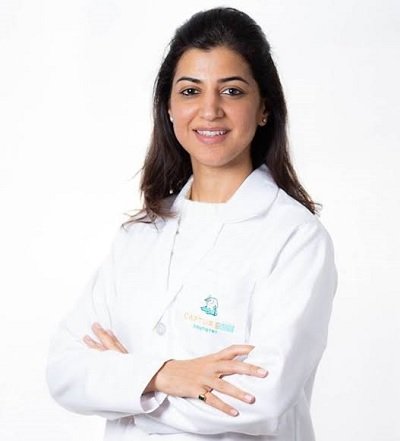The role of new tech in dentistry
March 31, 2022 | Thursday | News
Technological advancements in the dental industry are a win-win situation for both dentists and patients. An insight by Dr Namrata Rupani, Founder & CEO, Capture Life Dental Care
A visit to the dentist was viewed with distaste – read dread– not so long ago. Aside from the inevitable pain caused – whatever the intensity, it involved the not-so-envious procedure of sitting under a bright light and having your oral cavity invaded with an array of tools.
However, there has been a definite shift in processes – and patients’ attitudes - with the advent of technology in dentistry. The use of state-of-the-art devices and processes has not only smoothened, upgraded and eased processes for dentists, it has also made dental procedures quicker and less painful for patients.
So, technological advancements in the dental industry are a win-win situation for both dentists and patients. Let us take a closer look at these game-changers.
Implants
Implants help restore patients’ jaws with fixed teeth. They are now being used extensively by the dental fraternity. When the bone is adequate, it is very easy to restore the dentition with implants. However, when the patients’ teeth are missing, the alveolus is subjected to bone resorption and disuse atrophy. Moderate to severe atrophy was proposed to be managed with the All-on-4 procedure by Paulo Maulo. This called for three to four months of waiting time before the replacement of caps.
However, the process of replacing missing teeth is now possible even in situations in which the patient’s bone density is inadequate, owing to the introduction of Corticobasal implants. These single-piece implants have reduced the risk of failure due to the abutment fixture interface.
Advantages
1) Immediate functional loading possible
2) Suitable for smokers and diabetics
3) Non-invasive
4) Resistant to peri-implantitis
The use of Glabellar Implants has also emerged and is gathering pace in the category of new technology. We can place glabellar implants in patients who have injured their noses owing to accidents or other mishaps.
Augmented reality
In dental practice, technology is more prevalent in reconstructive and aesthetic procedures to help patients know what they will look like after the treatment. Augmented reality software can be used to overlay virtual depictions of the improved set of teeth prior to the start of the procedure. This allows both patients and dentists to configure features of the teeth, such as height and spacing, to their liking.
Virtual reality
Virtual reality completely shuts off the outside world for the patient with the help of a dedicated headset. This immerses the user into a virtual environment. Patients can visualise a pleasant environment – say, a calming landscape - while seated in the patient’s chair to improve their experience. Back in 2015, Nobel Biocare performed dental surgery that was filmed and conveyed through virtual reality. This allowed observers or patients to virtually assist the whole procedure from the surgeon’s perspective.
Teledentistry
Dentistry faced a huge challenge during the pandemic. Telephonic consultations made things easier for the dentists as well as the patients. Teledentistry provides ease of access to oral and dental care, and it is significantly cheaper for patients to shift towards preventive practices. It allows the patient to consult with otherwise unavailable professionals.
The dentist can connect with the patient and caregiver via a video chat, and this enables the professional to view and speak to the patient. This, in turn, helps establish a rapport between the two. This enhances the possibility of the patient visiting the clinic and consulting the dentist in face-to-face interaction. Tele dentistry is picking up steam, and authorities are responding favourably.
Computer-assisted design and 3D printing
3D- printing does not need any introduction, considering the buzz it generated in health care a while ago. Computer-assisted design and computer-assisted manufacture, including 3D printing, are revolutionising the sector.
They are both low cost and more effective. Traditionally, when a patient needed a crown, a dentist had to make a mould of the tooth, and fashion a temporary crown. There was then the wait for the dental lab to make a permanent crown with CAD/ CAM Technology.
Now, the tooth is drilled to prepare it for the crown, followed by a picture being taken with the help of a computer. This image is relayed to a machine, which then makes the crown using a3-D Printer. This enables dental labs to eliminate the bottleneck of manual modelling.
3D-Printers can also make orthodontic models, surgical guides, aligners, retainers and other dental equipment with speed and precision.
Regenerative dentistry
We have grown up with the belief that we will lose our teeth as we age and will then need a prosthesis. However, the field of regenerative dentistry challenges this preconceived idea, with developments that can lead to self-healing teeth and biological therapy for damaged teeth. Some universities have developed dental fillings that allow teeth to heal by themselves. These fillings stimulate stem cells to promote the growth of dentin or the main constituent of our teeth.
The use of technology in dentistry has revolutionised the concept and its processes and is expected to continue to do so going forward.










